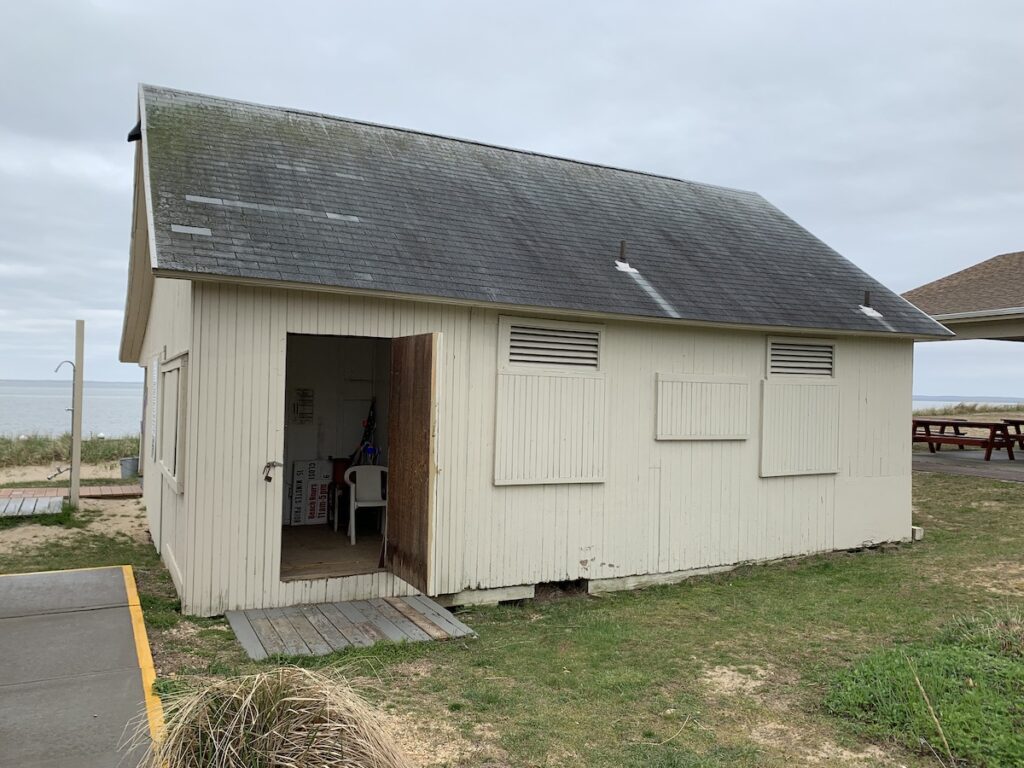Data collected by Group for the East End shows piping plover population remains steady in Southold

Efforts to protect threatened shorebirds are paying off in Southold Town, where conservationists report piping plovers had an overall productive season.
The small birds with black rings around their necks are protected through the federal Endangered Species Act and also listed as endangered in New York State.
In 2020, data collected by Group for the East End as part of a monitoring program for Southold Town shows that 14 nesting pairs produced 21 fledgling birds. Of approximately 23 sites monitored across town, 11 were active and 12 saw no activity, according to Steve Biasetti, director of environmental education for GFEE.
Compared to data from 2019, when 15 pairs generated 24 fledglings, Mr. Biasetti said recent data shows local piping plover populations remaining stable.
“It looks like productivity is improving,” he told Town Board members during a presentation at a work session Nov. 17. “We’re getting more fledglings per nest.”
His report shows that Breakwater Beach in Mattituck continues to be the most active site for the shorebirds, with four piping plover nests and seven fledglings recorded between April 1 and Sept. 1.
Least terns, another federally endangered species, were also most active at Breakwater Beach. Approximately 120 least tern nests and 30 fledges were observed there this year, according to the report.
Other productive areas included the area of Little Creek, Bailie Beach and the western portion of Gull Pond.
And despite ongoing efforts to promote their habitat by fencing in areas and limiting access, the birds are still threatened by human activities: waterfront development, ATV use, unleashed dogs and other predators and more.
“Group for the East End is routinely encountering a lack of enforcement on our part,” said GIS coordinator John Sepenoski, specifically on dog leash laws and ATVs, which are illegal to use on town property.
Mr. Biasetti said GFEE staff would routinely encounter people walking with off-leash dogs while monitoring the sites and frequently observed ATV tracks. “There were a couple of beaches where it seemed like that was happening regularly,” he said. “It’s dangerous for the birds for many reasons.”
Though ATV use was observed mostly on private sections of the beach, Mr. Biasetti said it still presents a danger to the fragile shorebirds.
The group continues to advocate for increased patrols as well as for expanding the town’s leash law to cover all hours between May 1 and Oct. 1, rather than the current law,s which requires leashes only between 9 a.m. and 6 p.m.
Another recommendation included in the report asks the town to consider adding U.S. Fish & Wildlife Service guidelines regarding fireworks near federally designated beach nesting bird areas into town code.
Mr. Biasetti’s report notes that the Fourth of July holiday presented the most problematic situation in East Marion and Orient, as people gathered along the beach to watch firework displays. “Some of the displays were disturbingly close to the nesting colony,” he wrote, adding that GFEE staffers were on hand to guide people away from the birds.
Supervisor Scott Russell acknowledged that enforcement in general is needed across all town beaches. “One thing the Town Board is going to have to do is talk about having a more regular presence at the beaches during the summer,” he said.
The discussion may require additional discussions with park districts, whose laws may not always mirror the town code. “If [Mattituck Park District] doesn’t require leashing on their beaches, we simply don’t have the authority to enforce anything,” Mr. Russell said.
Mr. Biasetti, who typically spends the spring and summer months working with East End students, said in an interview last Thursday that the shutdown and the recent departure of longtime GFEE vice-president Aaron Virgin allowed him to take part in the monitoring program for the first time in years. “It was a nice change of pace for me,” he said.
He said Breakwater is among the most suitable nesting locations on the North Fork because it provides a wide expanse and protection from tidal flooding, which threatens nesting activity. “It’s also a very active beach where a lot of people like to do a lot of different things — fishing, walking, sunbathing. So there’s a lot of monitoring necessary to bring those birds through to fledgling stage,” he said.
In addition to the 23 sites monitored by GFEE, Suffolk County and the state DEC also monitor sites at their parks in Peconic and Orient.
In May, numbers released by the U.S. Fish and Wildlife Service show that breeding piping plover pairs found along the Atlantic coast between North Carolina and Canada increased to 2,008 in 2019, up from 1,879 pairs in 2018.
The species reached a critically low point in 1986, when just 790 breeding pairs were recorded on the Atlantic Coast, according to data from the service.
The numbers are largely a testament to conservation work, including fencing off nesting areas and increased public awareness about the species.
“I don’t get the angry phone calls like I used to,” Mr. Russell said, from residents upset about losing beach space to protect the nesting birds.
While the birds have now left the North Fork in search of warmer weather, the U.S. Fish & Wildlife Service encourages beachgoers to continue behaviors — walking close to the water, keeping distance from wildlife, keeping pets leashed, removing food scraps and trash that can attract predators and not feeding animals — that will help protect piping plovers and other rare beach wildlife, including sea turtles.








